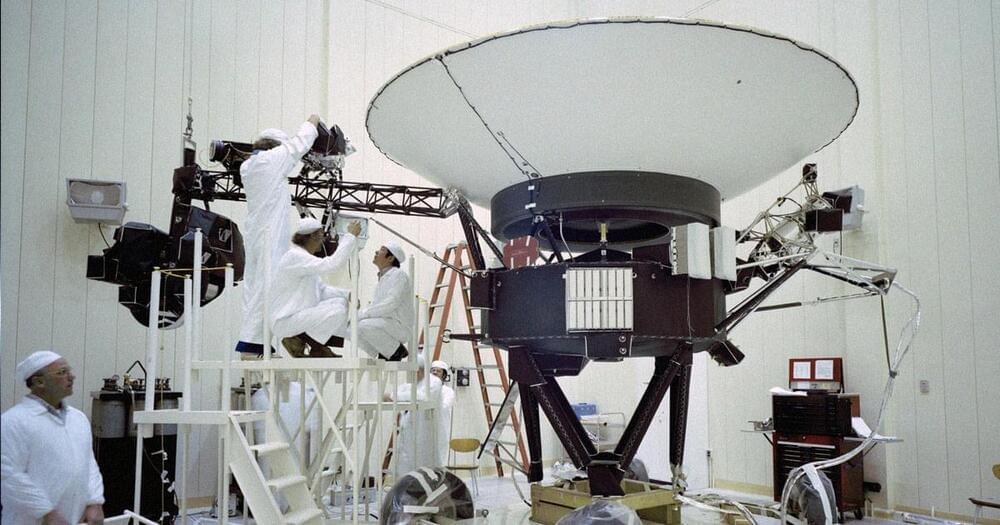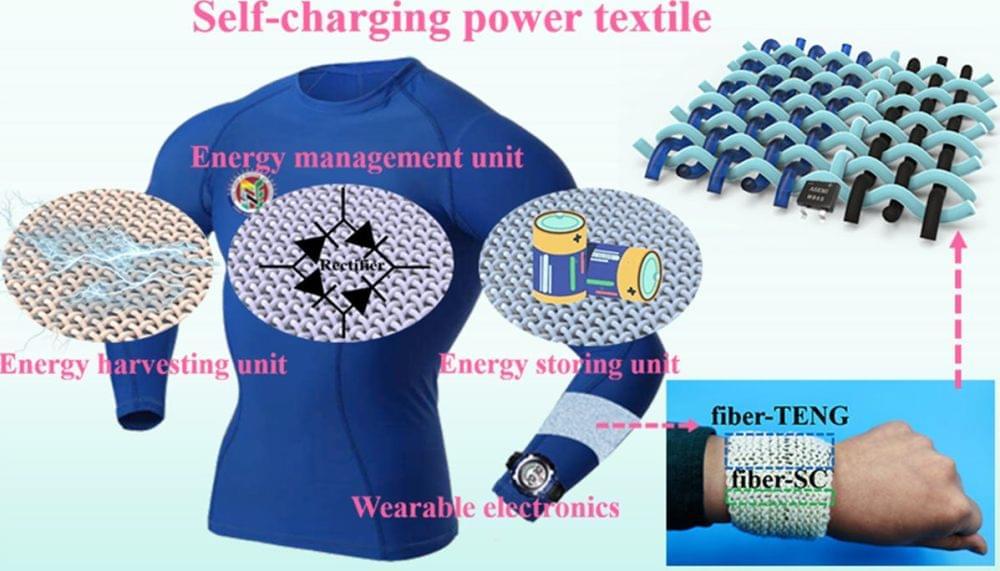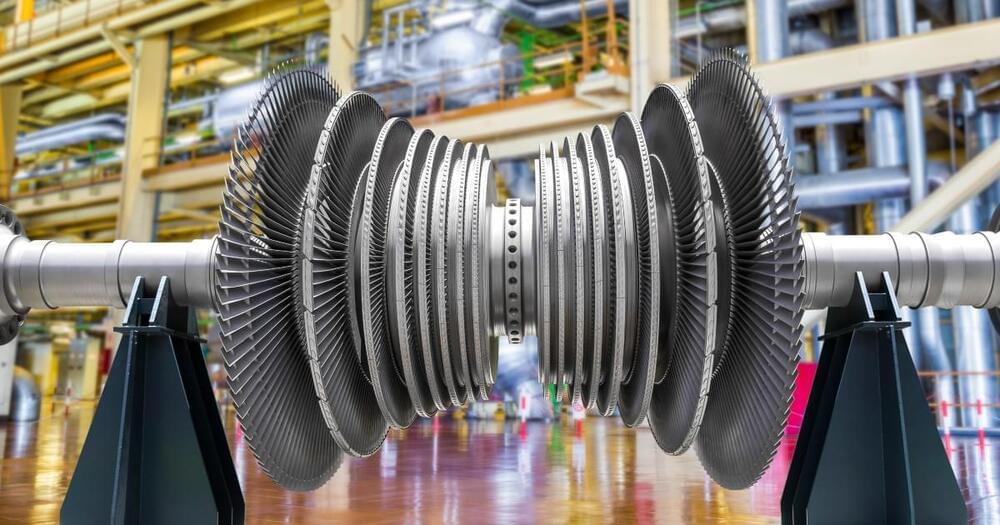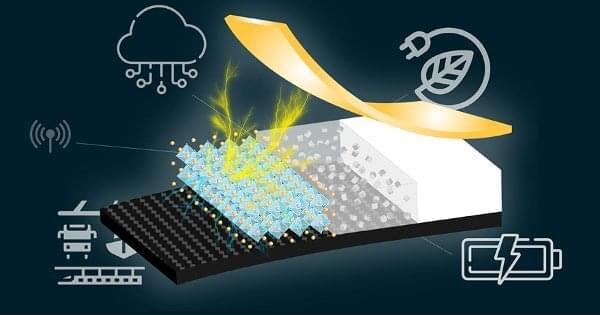Extreme heat is increasing electricity demand as people crank up the AC. The strain could be too much.



It turns out that reports of its death were greatly exaggerated. NASA says it’s figured out a way to extend the mission of its interstellar Voyager 2 probe by another three years.
And that’s no easy feat, considering the probe has been screaming through the cosmos since 1977 and is currently more than 12 billion miles from Earth.
The probe recently switched to its backup power reserves, which were originally set aside as part of an onboard safety mechanism, according to an update by NASA’s Jet Propulsion Laboratory.

The rapid development of wearable electronics requires its energy supply part to be flexible, wearable, integratable and sustainable. However, some of the energy supply units cannot meet these requirements at the same time, and there is also a capacity limitation of the energy storage units, and the development of sustainable wearable self-charging power supplies is crucial. Here, we report a wearable sustainable energy harvesting-storage hybrid self-charging power textile. The power textile consists of a coaxial fiber-shaped polylactic acid/reduced graphene oxide/polypyrrole (PLA-rGO-PPy) triboelectric nanogenerator (fiber-TENG) that can harvest low-frequency and irregular energy during human motion as a power generation unit, and a novel coaxial fiber-shaped supercapacitor (fiber-SC) prepared by functionalized loading of a wet-spinning graphene oxide fiber as an energy storage unit. The fiber-TENG is flexible, knittable, wearable and adaptable for integration with various portable electronics. The coaxial fiber-SC has high volumetric energy density and good cycling stability. The fiber-TENG and fiber-SC are flexible yarn structures for wearable continuous human movement energy harvesting and storage as on-body self-charging power systems, with light-weight, ease of preparation, great portability and wide applicability. The integrated power textile can provide an efficient route for sustainable working of wearable electronics.
Biologists usually define ‘life’ as an entity that reproduces, responds to its environment, metabolizes chemicals, consumes energy, and grows. Under this model, ‘life’ is a binary state; something is either alive or not.
This definition works reasonably well on planet Earth, with viruses being one notable exception. But if life is elsewhere in the universe, it may not be made of the same stuff as us. It might not look, move, or communicate like we do. How, then, will we identify it as life?
Arizona State University astrobiologist Sara Walker and University of Glasgow chemist Lee Cronin think they’ve found a way.

Significantly improved electric vehicle (EV) batteries could be a step closer thanks to a new study led by University of Oxford researchers, published today in Nature. Using advanced imaging techniques, this revealed mechanisms which cause lithium metal solid-state batteries (Li-SSBs) to fail. If these can be overcome, solid-state batteries using lithium metal anodes could deliver a step-change improvement in EV battery range, safety and performance, and help advance electrically powered aviation.
One of the co-lead authors of the study Dominic Melvin, a PhD student in the University of Oxford’s Department of Materials, said: ‘Progressing solid-state batteries with lithium metal anodes is one of the most important challenges facing the advancement of battery technologies. While lithium-ion batteries of today will continue to improve, research into solid-state batteries has the potential to be high-reward and a gamechanger technology.’
Li-SSBs are distinct from other batteries because they replace the flammable liquid electrolyte in conventional batteries with a solid electrolyte and use lithium metal as the anode (negative electrode). The use of the solid electrolyte improves the safety, and the use of lithium metal means more energy can be stored. A critical challenge with Li-SSBs, however, is that they are prone to short circuit when charging due to the growth of ‘dendrites’: filaments of lithium metal that crack through the ceramic electrolyte. As part of the Faraday Institution’s SOLBAT project, researchers from the University of Oxford’s Departments of Materials, Chemistry and Engineering Science, have led a series of in-depth investigations to understand more about how this short-circuiting happens.
This quickly turned out to be a record-setter. It was dubbed the Brightest Of All Time, or the “Boat,” as convenient shorthand among astronomers studying and observing the event. Not only did the Boat start out bright, it refused to fade away like other bursts.
We still do not fully know why the burst was so exceptionally bright, but our new study, published in Science Advances, provides an answer for its stubborn persistence.
The burst originated from a distance of 2.4 billion light years—relatively nearby for a GRB. But even when accounting for relative distance, the energy of the event and the radiation produced by its aftermath were off the charts. It is decidedly not normal for a cosmically distant event to deposit about a gigawatt of power into the Earth’s upper atmosphere.

The European Space Agency (ESA) launched the BepiColombo mission in 2018, and it is set to enter orbit around Mercury in 2025. In the meantime, it will be making several flybys of the planet, including a close approach today. That’s because the spacecraft’s route takes it on a series of increasingly close flybys that use the planet’s gravity to adjust its course each time.
In total, between its launch in 2020 and its arrival in Mercury orbit in 2025, the spacecraft will make one flyby of Earth, two of Venus, and six of Mercury. The Earth and Venus flybys are already complete, and today BepiColombo is making its third Mercury flyby, coming within 150 miles of the planet’s surface.
The maneuver will help to slow the spacecraft down so that it can eventually enter orbit. “As BepiColombo starts feeling Mercury’s gravitational pull, it will be traveling at 3.6 kilometers per second [2.2 miles per second] with respect to the planet. That’s just over half the speed it approached with during the previous two Mercury flybys,” explained ESA flight dynamics expert Frank Budnik in a statement. “And this is exactly what the point of such events is. Our spacecraft began with far too much energy because it launched from Earth and, like our planet, is orbiting the sun. To be captured by Mercury, we need to slow down, and we’re using the gravity of Earth, Venus and Mercury to do just that.”

A new high-performance metal alloy, called a superalloy, could help boost the efficiency of the turbines used in power plants and the aerospace and automotive industries.
Created using a 3D printer, the superalloy is composed of a blend of six elements that altogether form a material that’s both lighter and stronger than the standard materials used in conventional turbine machinery. The strong superalloy could help industries cut both costs and carbon emissions — if the approach can be successfully scaled up.
The challenge: In the world of materials science, the search for new metal alloys has been heating up in recent years. For over a century, we’ve depended on relatively simple alloys like steel, composed of 98% iron, to form the backbone of our manufacturing and construction industries. But today’s challenges demand more: alloys that can withstand higher temperatures and remain strong under stress, yet still be lightweight.

An international research group has engineered a new energy-generating device by combining piezoelectric composites with carbon fiber-reinforced polymer (CFRP), a commonly used material that is both light and strong. The new device transforms vibrations from the surrounding environment into electricity, providing an efficient and reliable means for self-powered sensors.
Details of the group’s research were published in the journal Nano Energy on June 13, 2023.
Energy harvesting involves converting energy from the environment into usable electrical energy and is something crucial for ensuring a sustainable future.

A collaborative team led by researchers from City University of Hong Kong (CityU) recently invented an innovative method for synthesizing high-quality, semiconducting nanomesh at a lower temperature and production cost than conventional methods. The findings will help enable the large-scale production of nanomesh for next-generation electronics.
Nanomesh is a nano-scale material formed from a network of nanowires. For several decades, one-dimensional materials like nanowires made of crystalline inorganic materials have been widely explored as the main driver for emerging electronics, as they have features like mechanical flexibility, energy efficiency and optical transparency. However, the scalability, integrability and cost-effectiveness of nanowire semiconductors are insufficient, limiting their potential for large-area electronic and optoelectronic applications.
To overcome these shortcomings, a research team led by CityU scientists made a breakthrough, inventing a low-temperature vapor-phase growth method, which can achieve large-scale synthesis of semiconducting tellurium (Te) nanomesh for use in devices.